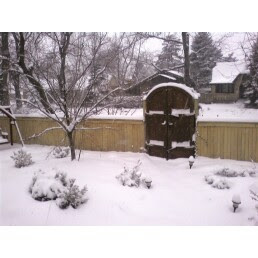NEWS RELEASES
FOR IMMEDIATE RELEASE
December 17, 2007
Sandia Supercomputers Offer New Explanation of Tunguska Disaster:
Smaller asteroids may pose greater danger than previously believed
ALBUQUERQUE, N.M. — The stunning amount of forest devastation at Tunguska a century ago in Siberia may have been caused by an asteroid only a fraction as large as previously published estimates, Sandia National Laboratories supercomputer simulations suggest.
“The asteroid that caused the extensive damage was much smaller than we had thought,” says Sandia principal investigator Mark Boslough of the impact that occurred June 30, 1908. “That such a small object can do this kind of destruction suggests that smaller asteroids are something to consider. Their smaller size indicates such collisions are not as improbable as we had believed.” Because smaller asteroids approach Earth statistically more frequently than larger ones, he says, “We should be making more efforts at detecting the smaller ones than we have till now.”
 INCINERATION POSSIBLE - Fine points of the "fireball" that might be expected from an asteroid exploding in Earth's atmosphere are indicated in a supercomputer simulation devised by a team led by Sandia researcher Mark Boslough. (Photo by Randy Montoya )
INCINERATION POSSIBLE - Fine points of the "fireball" that might be expected from an asteroid exploding in Earth's atmosphere are indicated in a supercomputer simulation devised by a team led by Sandia researcher Mark Boslough. (Photo by Randy Montoya )
The good news from this study was that the overall devastation caused by the impact was less than previously believed. The bad news is that the impact appears to have been caused by a smaller asteroid than we thought. The previous estimates of the size of the asteroid ranged between 100 meters on up to 1200 meters. This study confirms that the asteroid was towards the lower end of these estimates.
“Our understanding was oversimplified,” says Boslough, “We no longer have to make the same simplifying assumptions, because present-day supercomputers allow us to do things with high resolution in 3-D. Everything gets clearer as you look at things with more refined tools.”
Sandia is a National Nuclear Security Administration laboratory.
The new interpretation also accounts for the fact that winds were amplified above ridgelines where trees tended to be blown down, and that the forest at the time of the explosion, according to foresters, was not healthy. Thus previous scientific estimates had overstated the devastation caused by the asteroid, since topographic and ecologic factors contributing to the result had not been taken into account.
This would help to explain the large amounts of forest that were levelled by a relatively minor impact that you can see in the following photo-

The alarming aspect of this study is that we now understand more about the mechanics and the physics involved in an asteroid impact, and how small an asteroid can be to still pack a large amount of destructive force. The probabilities that we currently base our risk analysis of impacts on will have to be revised in terms of potential catastrophic scenarios. As I discussed in my
recent report on the NASA/NEO Congressional Hearings, we have been able to rule out around 90% of the asteroids in our solar system that our over a mile wide from becoming potential threats. However, NASA has flatly stated they do not plan on meeting the the requirements established in Sec. 321(d)(1) of the NASA Authorization Act of 2005 that they "plan, develop, and implement" a NEO survey program for objects as small as 140 meters in size. This latest study from Sandia Labs illustrates that even smaller asteroids than we thought can still cause serious damage.
Sandia has some of the animated videos used in the study about these impacts available, and I have them listed below for your viewing pleasure.

Movie 1
Movie 4
Movie 2
Movie 3
Movie 4
Movie 5
Movie 6
Movie 7
Movie 8
This study only further emphasizes the statement that I'm always freaking out about:
WHEN, not IF.





